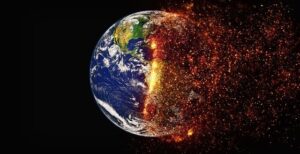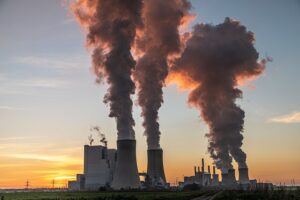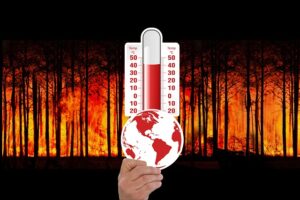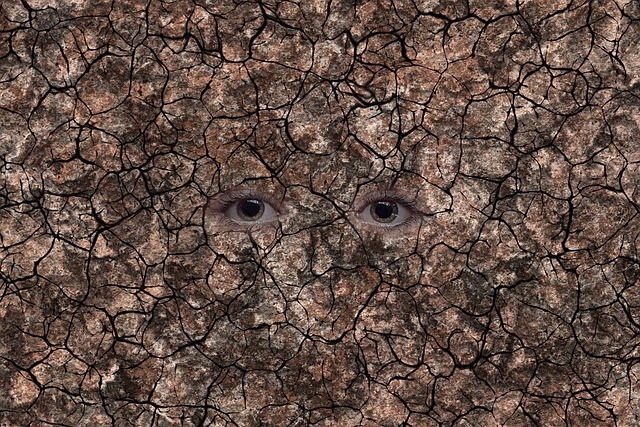The 10 Alarming Effects of Global Warming
Learn about the 10 alarming effects of global warming and discover what you can do to make a difference. Explore the science behind global warming, its impacts on the environment and human health, and the solutions we can implement to combat this critical issue.
Thank you for reading this post, don't forget to subscribe!
Introduction:
Global warming, also called climate change, is one of the most pressing issues of our time. It refers to the long-term increase in Earth’s average surface temperature due to human activities, such as deforestation, hunting , and primarily the emission of greenhouse gases. This article delves into the causes, effects, consequences, and solutions to this global crisis.
Causes of Global warming:

1.Emissions of Greenhouse Gases:
Deforestation, Burning of fossil fuels for energy and industrial processes release carbon dioxide (CO2), methane (CH4), and nitrous oxide (N2O), which trap heat in the atmosphere and raise the temperature of earth and cause global warming.
2. Deforestation:
Cutting down trees reduces the Earth’s ability to absorb CO2, leading to an increase in greenhouse gases. And we can’t get pure oxygen.
Consequences of Global warming:

1. Rising Temperatures:
Increased global temperatures lead to more frequent and severe heat waves that raise the earth temperature.
2.Melting Ice and Rising Sea Levels: Glaciers and polar ice caps are melting, due to high temperature causing sea levels to rise, threatening coastal communities.
3. Extreme Weather Events:
Global warming contributes to more intense droughts, hurricanes and floods.
4.Ocean Acidification:
Higher CO2 levels in the atmosphere also lead to more acidic oceans, harming marine life. Aquatic life is disturbed due to global warming.
Solution of Global warming:

1.Transition to Renewable Energy:
Investing in wind, solar, and hydroelectric power can reduce carbon emissions and decrease global warming.
2. Energy Efficiency:
High energy efficiency in homes, vehicles, and industries reduces energy consumption and emissions.
3. Reforestation and Afforestation:
Planting trees and restoring forests can absorb CO2 and all species get pure oxygen.
4. Climate Policies:
Governments and international agreements should take strict steps to set emission reduction targets.
Effects of Global warming on different species:
Effects on Animals:
Temperature of Earth is now about 1.1°C (2°F) warmer than it was in the 1800s. Based on current projections, global temperatures will rise by 2.7°C (4.8°F) by the end of the century. It’s impossible to predict exactly how long-term shifts in temperatures and weather patterns will affect our planet’s fragile, deeply entwined ecosystems. Changes in one area influence changes in other areas and animals will feel the impact. Some of the biggest climate-driven threats for wildlife include:
Health Risks Associated with Global Warming
Human health is also at risk due to global warming. Higher temperatures can lead to heat-related illnesses, such as heatstroke and dehydration. Additionally, changes in climate patterns can affect the spread of vector-borne diseases, such as malaria and dengue fever, putting more people at risk.
1.Habitat loss:
Global warming affects vegetation, food sources, access to water and much more. Ecosystems may become uninhabitable for certain animals, forcing wildlife to migrate outside of their usual patterns in search of food and livable conditions, while causing other animals to die off.
e.g. if cats of habitat loss and fragmentation due to human development and global warming continue combined with deaths from poaching we could lose Africa’s elephants in the next 40 years.
2.Natural disasters:
Nowadays we face a five fold increase, compared to 50 years ago, in climate and weather-related natural disasters such as droughts, wildfires and hurricanes. These disasters cause catastrophic loss of life and habitat for people, pets and wildlife and aquatic life.
3.Human-wildlife conflict:
Global warming intensifies human-wildlife conflict through habitat loss and extreme climate change, forcing people and wildlife to share increasingly crowded spaces. As ecosystems change, people and wildlife and aquatic life animals are in search of food, water and resources. Human-wildlife conflict often results in devastating impact for the animals affected e.g. jaguars sometimes prey on domestic animals and disrupt human livelihoods, leading to retaliatory killings.
4.Extinction:
The combination of challenges could cause many animals to go extinct. The world’s most vulnerable animals, including those already near extinction, will likely face the biggest threats.
Effects on plants:
Plants play an important role in the functioning of life on Earth. These are just some of the benefits that people gain from natural systems, also known as ecosystem services:
1.Oxygen:
With the help of photosynthesis, plants use carbon dioxide, sunlight, and water to create energy and release oxygen. And humans get oxygen from plants and global warming badly affects plants.
2.Recovery from natural disasters:
Plants help to protect soil from erosion and release nutrients to keep soils fertile. The growth and survival of plants depends on an ecosystem’s characteristics including the amount of sunlight, soil moisture, soil pH, flood depth, and salt tolerance.But global warming affects plants and plants can’t do such functions properly.
3.Food:
Plants make the food chain. In addition to feeding wildlife, thousands of species of plants have been cultivated for human eating.
4.Interception of pollutants:
Plants can catch airborne pollutants and purify drinking water. Wetland plants, for instance, help remove heavy metals and excessive levels of nutrients through their root systems. But global warming increases the effects of pollutants on the environment.
5.Medicine:
Many medicines are manufactured from plants. Global warming affects plants and their production.
6.Lowered Productivity:
Longer droughts and increased number of heat waves will stress plants, causing them to be less productive. That causes a ripple of problems because plants are the primary producers of life.Plant productivity supports wildlife and serves as the basis of a multitude of food chains. The decline of plants means there will be less food, which can further lead to declines in animal populations.
7.Spread of Invasive Plants:
When environmental conditions change, native species can lose their natural advantages and invasive species have a greater opportunity to thrive and in extreme cases, take over landscapes.
8.Vulnerability to Pests:
Native plants can lose resiliency due to climate-change induced stressors, making them more vulnerable to invasive insect pests. As the weather warms, more destructive pests will survive the milder winters, have more reproductive success, and their growing populations will cause more damage to the native tree and plant species.
Effects on aquatic life:
Biodiversity is continually transformed by a changing climate. Nowadays, a new type of climate change, brought about by human activities, is being added to this natural variability, threatening to accelerate the loss of biodiversity already under stress due to other human stresses.
Almost 70% of the earth’s surface is covered by water. Climate change is already changing the distribution and abundance of aquatic ecosystem. Even minor changes to water temperature will result in changes to the currents that flow across the earth’s surface. An aquatic ecosystem is broadly fall in to two categories
(a)Marine ecosystem and
(b)Freshwater ecosystem.
Marine ecosystem:
Climate change within the ocean:
The increase in Global warming within the earth’s atmosphere is set to change three fundamental variables:
1. Reduced Total Carbonate alkalinity:
Total carbonate alkalinity of seawater will decrease as CO2 increases within the earth’s atmosphere due to global warming. This particular variable is expected to substantially change the acidity and carbonate ion pool of the global ocean. Doubling carbon dioxide concentrations in the atmosphere will decrease the aragonite saturation state in the tropics by 30% by 2050.
2.Increased Sea level:
Changes in sea level have had major impacts on the abundance and particularly the distribution of aquatic life.Sea level will rise as global warming pushes planetary temperature higher. This occurs due to the thermal expansion of ocean water, the melting of glaciers, and changes to the distribution of ice sheets. The expected increase in sea level is approximately 9 – 29 cm over the next 40 years.
3.Sea temperature increase:
Sea temperature in turn influences the marine environment. Due to its direct effects on the density of seawater, changes in global temperatures can play directly upon the rates and directions of ocean water movement.
4.Deep sea biodiversity:
The deep sea is increasingly affected by global warming. It is believed that the deep seabed supports more species than all other marine environments. Marine biodiversity and ecosystem are threatened by pollution, shipping, military activities and climate change, but today fishing presents the greatest threat.
The greatest threat to biodiversity in the deep sea is bottom trawling. This type of high seas fishing is more damaging to seamounts and the cold-water corals they sustain. These habitats are home for several commercial bottoms- dwelling fish species.
5.Fish population:
Many scientists now point to the dramatic over exploitation of fisheries and the subsequent decline in fish stocks as the major factor in ecosystem change over the past two centuries. Recent evidence has revealed that oceanographic and climatic variability may play a dominant role in fish population . The most widespread effects of climate occur on the primary and secondary production in marine ecosystems.
6.Coral Reef:
Coral reefs have already experienced major impact from climate changes.
Coral bleaching occurs when corals rapidly lose the cells. Bleaching results in colonies turning from brown to while, often with spectacular host pigments being exposed. Reef building corals that lose these important symbionts may experience mortality rates that may exceed 90% changes in reef building coral communities are likely to have huge impacts on marine biodiversity. Corals form the essential framework within which a multitude of other species makes their home. Fish that depend on corals for food, shelter or settlement cares may experience dramatic changes in reef building coral communities are likely to have huge impacts on marine biodiversity. Corals form the essential framework within which a multitude of other species makes their home. Fish that depend on corals for food, shelter or settlement cures may experience dramatic changes in abundance or go extinct. Thousands of other organisms are also vulnerable impacts on marine biodiversity. Corals form the essential framework within which a multitude of other species makes their home. Fish that depend on corals for food, shelter or settlement cares may experience dramatic changes in reef building coral communities are likely to have huge impacts on marine biodiversity.
(b) Freshwater ecosystem :
The threats to freshwater fauna fall into several broad categories: nutrient enrichment, hydrological modifications, habitat loss and degradation, pollution, and the spread of invasive species. A changing climate and increasing levels of UV light pose additional risks that superimpose upon existing threats. The combination of rapid land use change, habitat alteration and a changing climate is viewed as a particular serious challenge to aquatic life.
Climate change and the hydrologic cycle:
Freshwater ecosystems will naturally be sensitive to change in the hydrologic cycle and these are difficult to predict. Global warming will result in greater evaporation from water surfaces and greater transpiration by plants which will result in a more vigorous water cycle. Future climate change will directly affect lake ecosystems through warmer temperature and changes to the hydrologic cycle.
Biological impacts:
Rapid climate change has many negative implications for the biodiversity of rivers and streams. Climate change may cause extinction at several taxonomic levels. At the species level, those species that are highly restricted in their geographic ecologically are vulnerable to global extinction. This is true for fish where there are regional differences in the proportional occurrence of specialised species that are vulnerable to global extinction.
Conclusion:
Global warming is a critical issue that affects every living being on our planet. specific and urgent action is required to mitigate its effects and protect our environment for future generations. By reducing greenhouse gas emissions, transitioning to sustainable energy sources, and embracing environmentally responsible practices, we can work towards a more sustainable and habitable world.
FAQ:
Here are some frequently asked questions (FAQs) about global warming along with their answers:
1.What is global warming?
Ans. Global warming refers to the long-term increase in Earth’s average surface temperature due to human activities, primarily the release of greenhouse gases into the atmosphere.
2.What causes global warming?
Ans. The primary cause of global warming is the emission of greenhouse gases, such as carbon dioxide (CO2), methane (CH4), and nitrous oxide (N2O) from activities like burning fossil fuels, deforestation, and industrial processes.
3.How does global warming affect the environment?
Ans. Global warming leads to a range of environmental impacts, including rising sea levels, more frequent and severe heat waves, increased wildfires, melting ice caps and glaciers, and disrupted ecosystems.
4.What are the consequences of global warming for humans?
Ans. Human consequences of global warming include health risks from extreme heat, food and water shortages, displacement due to sea-level rise, and increased economic costs associated with climate change.
5.Can we stop global warming?
Ans. It may be challenging to completely stop global warming. We can mitigate its effects by reducing greenhouse gas emissions, transitioning to clean energy sources, and adopting sustainable practices.
6. How can individuals help combat global warming?
Ans. Individuals can contribute by reducing energy consumption, using public transportation or carpooling, conserving water, recycling, and supporting policies and practices that promote environmental sustainability.
7.Are there any natural factors contributing to global warming?
Ans. While natural factors like volcanic eruptions and solar variability can influence climate, the current rapid warming is primarily driven by human activities.
8.What is the difference between global warming and climate change?
Ans. Global warming is a specific aspect of climate change. Climate change encompasses a broader range of changes in temperature, precipitation patterns, and other climate-related factors, while global warming specifically refers to the increase in global temperatures.
9. Is global warming reversible?
Ans. Some of the effects of global warming can be reversed or mitigated if we take substantial actions to reduce greenhouse gas emissions. However, certain consequences, such as sea-level rise, may be irreversible in the short term.
Feel free to ask for more details on any of these questions or if you have additional inquiries related to global warming.
